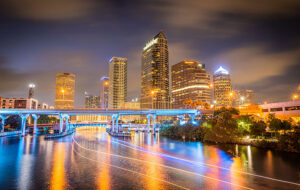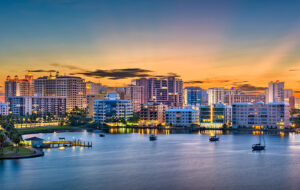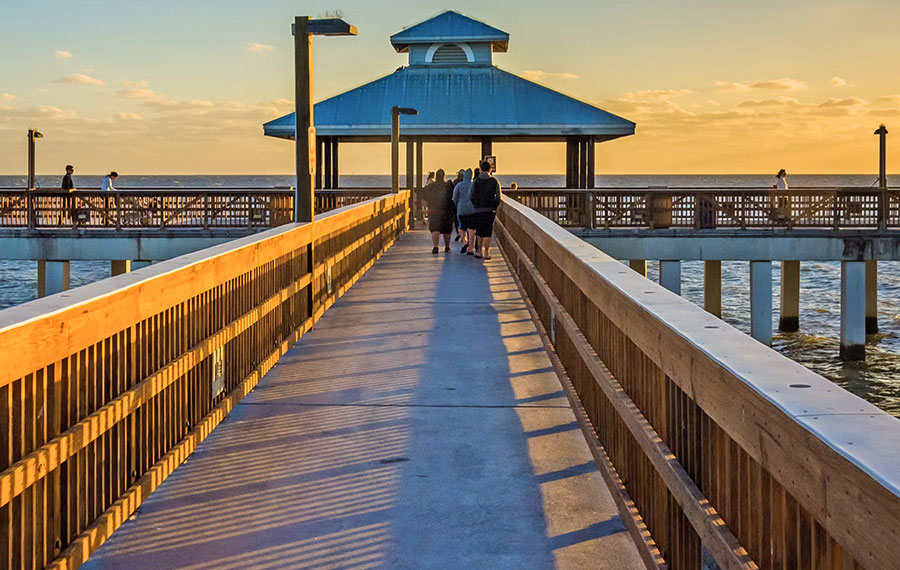
Planning a trip to the sunny city of Fort Myers? Whether you’re a new visitor or a local resident, there’s always something waiting to be discovered in this charming Florida destination. From beautiful beaches to rich cultural heritage, Fort Myers has something for every type of tourist. But did you know that there are also plenty of fun and interesting facts about this hidden gem? In this article we’ll take you on a journey through 25 fascinating tidbits about Fort Myers that will enhance your travel experience and give you a deeper understanding and appreciation for this lively city. So grab your sunscreen and let’s dive into the lesser-known facts of Fort Myers!
1) Fort Myers has the most sunny days year-round of any Florida city.
If you’re a lover of sunshine, then Fort Myers and Bonita Springs should definitely be on your radar. These two neighboring cities have a little secret that might surprise you: they have the most sunny days each year out of all the major cities in Florida. That’s right, even more than Miami or Key West! With a whopping 271 sunny or partly sunny days per year on average, you can rest assured that you’ll be soaking up the Vitamin D almost every day. And what better way to enjoy those sunny days than with the pristine beaches and turquoise waters that Fort Myers and Bonita Springs have to offer? So pack your swimsuits, sunglasses, and sunblock, and get ready to bask in the sunshine.
2) Fort Myers’ beaches boast more shell varieties than anywhere else in North America.
The Fort Myers area beaches, such as Sanibel and Captiva, are nationally renowned for their exceptional shelling opportunities. Here, you can discover an extensive array of shell varieties, surpassing anywhere else in the country. The popularity of shelling is so immense that two postures of shell hunters have been named after the area: the iconic “Sanibel Stoop” and the distinctive “Captiva Crouch.” Moreover, these pristine beaches offer the chance to find rare and valuable shells, including the coveted “sculpted lion’s paw” and the exquisite “golden tulip.”
3) Captiva Island was the full-time home of artist Robert Rauschenberg.
Fort Myers is a vibrant city brimming with the arts, from the captivating galleries of the River District to the eclectic haven of Matlacha. Thanks to the enduring legacy of Robert Rauschenburg, Captiva Island is adorned with boutique art galleries and hosts an array of eclectic art shows that will appeal to anyone’s creative instincts. Additionally, the Rauschenburg Residency (founded by the artist’s estate) plays a pivotal role in attracting fresh talent to this exciting and thriving area. The abundance of talented artistry, combined with ideal weather and gorgeous scenery, make Fort Myers a true haven for tourists.
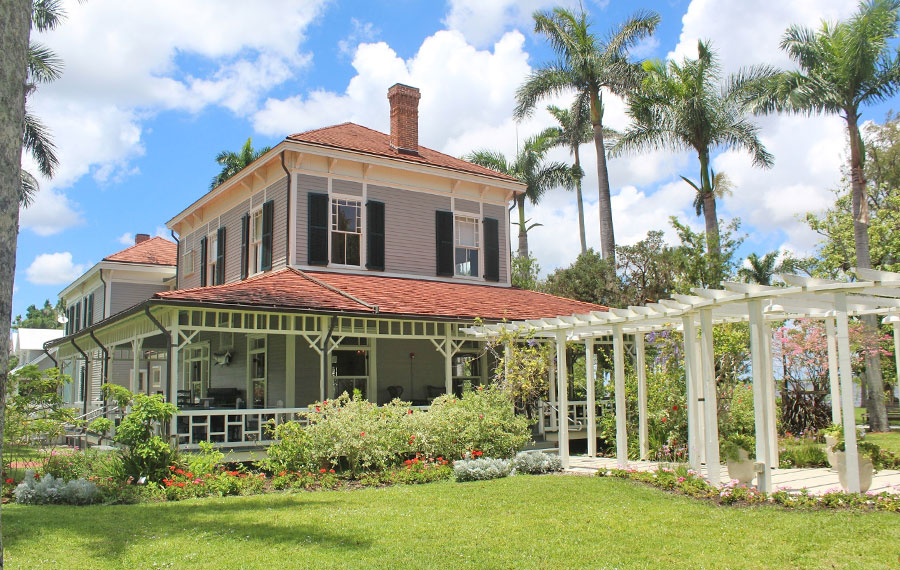
4) In 1886, the first electric lights in Fort Myers were turned on at the Edisons’ home.
While the inventor’s main goal was accomplished in 1887 – to bring electricity to his lab so he can work around the clock, most of Edison’s home was illuminated in 1886 by electroliers, basically chandeliers. Legend has it that Edison went on later to propose illuminating the entire downtown area, but the residents declined due to their worry about the cows staying awake at night. While this tale may be an urban legend, it’s undeniable that Edison made significant contributions to the town, as you’ll soon discover in the following captivating fact.
5) Thomas Edison planted the first of McGregor Boulevard’s iconic palms.
In 1907, the world-renowned inventor, Thomas Edison, and his delightful wife, Mina embarked on a noble mission of beautification in Fort Myers. They purchased and planted 200 royal palm trees along the innocuous McGregor Boulevard, little more than a dirt road back then, winding its way from downtown Fort Myers to their personal estate. These majestic trees have grown and flourished over the years, and today the city proudly cares for 2,000 of these towering palms. With many reaching and even surpassing a lofty 75 feet in height, these royal palms stand as a tribute to the city’s commitment to nature and the vision of its early patrons. They’ve not only beautified the landscape but turned Fort Myers into a unique oasis that stands out for its blend of urban development and natural beauty. So charmed are its residents and visitors by the sight of these majestic trees, that Fort Myers has earned the endearing nickname “City of Palms.”
6) The name of Fort Myers was bestowed as an engagement present.
Step back in time to the year 1850, where the story of Fort Myers begins. Guided by the dutiful hands of General David Twiggs, a small bastion on the Caloosahatchee River was under his watchful care. Deeper into the fort’s story, we encounter a tale of love and honor. Twiggs’ beautiful daughter, Marion, found herself falling head over heels in love with a charismatic staff officer by the name of Abraham C. Myers — a man who would become far more than just an officer in the fort. Recognizing the bond between his beloved daughter and Myers, Twiggs felt a deep sense of respect and appreciation for the man. As a heartfelt gesture, he decided to name the town “Fort Myers” in honor of his future son-in-law, a decision that has given the place a unique identity to this day. 1853 was a monumental year for the lovebirds as they tied the knot, their union strengthening the legacy of Fort Myers. This historic tale not only marks the beginning of a town, but also a long-lasting love story that still echoes down the lanes of Fort Myers.
7) Fort Myers has not one but four designated historic districts.
Each of these districts exudes its own unique charm, offering an intriguing blend of the past and the present: Seminole Park, Edison Park, Dean Park, and Downtown Fort Myers. Adding to the city’s historic allure are nearly 20 distinct historic landmarks, each a testament to the city’s captivating past, and each lending an elegant touch of antiquity to the modern landscape. And what makes these historic landmarks and districts even more special is their inclusion in the Historic Preservation program. This ensures their rich history, architectural beauty, and intrinsic value are aptly preserved and appreciated. A visit to Fort Myers is much more than just a day trip – it’s a journey through time, a celebration of Florida history, and a peek into the heart and soul of the destination’s culture.
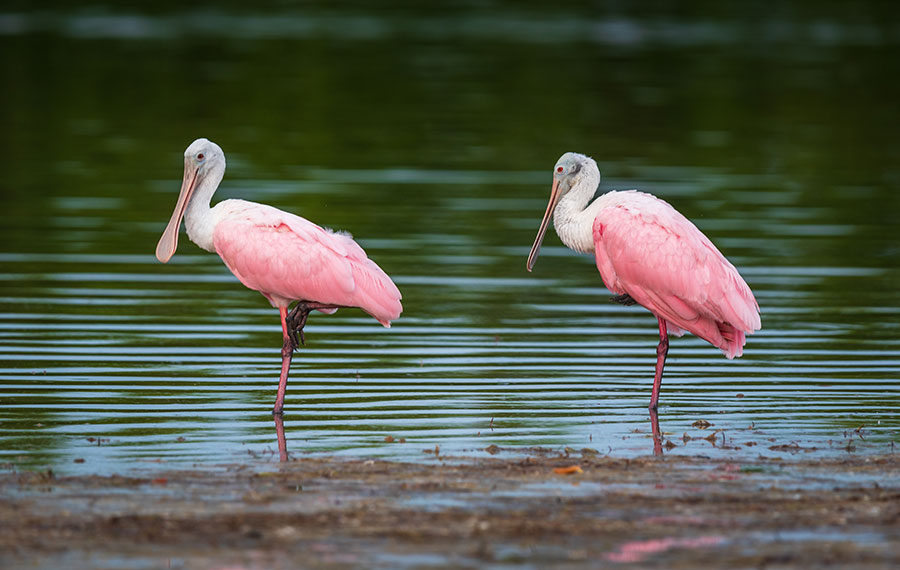
8) Estero is the headquarters to Hertz Rental Car Company.
The car rental giant, Hertz, launched their headquarters in Estero in South Fort Myers after acquiring Dollar Thrifty Automotive Group in 2012. This move marked a huge moment as Hertz became the first Fortune 500 Company to grace the area with its presence. Hertz introduced over 700 jobs to Lee County, triggering an economic increase in the region. What better place to anchor their business than in Florida – the state renowned for renting more cars per capita than anywhere else in the U.S.? Hertz’s strategic positioning not only brings economic prosperity to the region, but it also means better and swifter services for Florida tourists. With Hertz in town, renting a car has never been more convenient or exciting!
9) J.N. “Ding” Darling National Wildlife Refuge is home to more than 245 bird species.
This local paradise is the perfect spot for birders or anyone who loves to see wildlife in a secluded setting. The 5,200 acre refuge along Sanibel Island was established in 1976, to protect one of the nation’s largest undeveloped mangrove ecosystems. One unique resident is the roseate spoonbill – it looks a lot like a flamingo, but its pink color is natural rather than acquired from eating shrimp. J.N. “Ding” Darling National Wildlife Refuge is also a popular paddling, hiking and biking spot and hosts free seasonal programs and tours.
10) Captiva Island is home to the world’s smallest fishing museum.
In the middle of Captiva Island, you’ll find the unspoiled jewel that is Jensen’s Marina. A charming destination rooted deep in local heritage, it’s more than just a marina – it’s a window into the area’s fascinating fishing history. Here, tourists and locals alike are invited to explore a modest but intriguing set of exhibits that narrate the fishing tales of the area. But Jensen’s Marina is more than just a history enthusiast’s dream. It also offers an array of recreational services. From quaint, comfortable cottage rentals that offer you a home away from home, to boat rentals where you can set sail on your own aquatic adventure, Jensen’s has something for everyone. For those seeking guided assistance in exploring this island paradise, Jensen’s Marina offers expertly-led guided tours, designed to create unforgettable experiences. So, if you’re eager to learn more about the area’s fishing history, Jensen’s Marina stands ready to make your day unforgettable.
11) Spanish explorer Ponce de León was mortally wounded in this area by a Calusa arrow.
In 1521, the renowned explorer Ponce de León embarked on an ill-fated journey, his sights set on the shores of Fort Myers’ Pine Island. His mission was one of expansion and discovery, to establish a new settlement in the future Fort Myers area. Unfortunately, the native Calusa Indians, fiercely protective of their nearby capital city, perceived the foreign incursion as a threat, leading to a violent confrontation with Ponce de León’s crew. The skirmish was brutal, and in the heat of the battle Ponce de León’s leg was struck with an arrow. But this was no ordinary wound – the arrowhead had been dipped in the toxic sap of the deadly manchineel tree. The poison slowly worked its way into his system, leading him to retreat to Havana, Cuba. Despite his fighting spirit, Ponce de León was unable to recover, and ultimately succumbed to the fatal wound, marking a tragic end to his voyages in the New World.
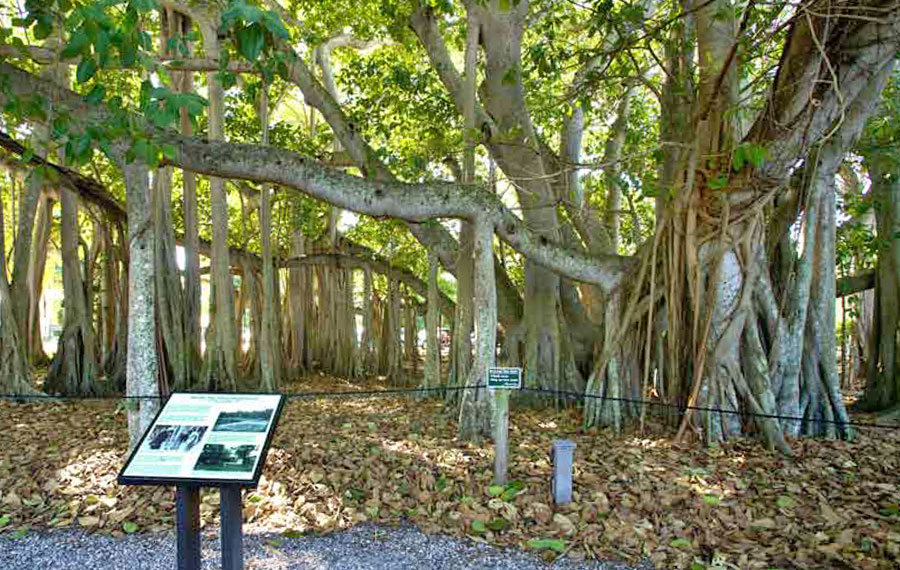
12) The sport of tarpon fishing originated in Pine Island Sound in the late 1880s.
Discover the thrilling pastime that sparked an industry boom in the Fort Myers area towards the end of the 19th century, fishing the bountiful Tarpon. With their radiant silver scales and acrobatic skill, these majestic creatures not only offer an exhilarating challenge for anglers but also played a pivotal role in the local history. Nestled between the serene Cayo Costa and the picturesque Gasparilla Island is the Boca Grande Pass. More than just a gateway between islands, this location holds global recognition. It’s heralded as the “Tarpon Fishing Capital of the World.” Every year, seasoned fishing enthusiasts and novice anglers alike flock here, all with the same goal – to reel in the mighty tarpon. Whether you’re a seasoned fisherman or new to the game, the sense of accomplishment of catching a tarpon in these waters is unparalleled. Immerse yourself in a rich angling tradition that is part of Fort Myers’ identity and create unforgettable fishing tales of your own.
13) The year 1884 was a turning point in Fort Myers history.
The momentous year of 1884 marked a significant change for the city of Fort Myers, a series of pivotal events that were instrumental in shaping the city’s future. The first remarkable event was the division of Monroe County to create Lee County, a move that effectively fortified Fort Myers’ position and significance in the region. Furthermore, in the same year, the construction of a new courthouse, paired with the launch of the Tropic News town paper, bestowed upon Fort Myers an undeniable sense of urbanity, transforming its identity into a polished, official urban center. Adding to its economic growth, the area benefited from a severe freeze that overran the northern part of Florida, pushing the flourishing citrus industry (including pineapple growers) to relocate to the equitable climate of the Fort Myers area. All these fortuitous events were catalysts that contributed to an era of growth and significance for Fort Myers, enabling it to shine as an important city, rich in both history and promise.
14) Fort Myers is home to the largest banyan tree in the country.
The giant banyan tree is located on the property at the Edison & Ford Winter Estates. It is not just the largest specimen in the U.S., but the third largest in the world as well. The tree’s aerial roots have a circumference of more than 400 feet. Interestingly, the tree was brought from India in a butter tub and was 2″ in diameter and a mere four feet high when given as a gift by Harvey Firestone to Thomas Edison in 1925. Banyan is a member of the rubber family, a species of particular interest to both men as they were then working on a new domestic breed of rubber plant.
15) Fort Myers is home to a feather factory.
Just east of Downtown Fort Myers lies a hidden gem – the SA Feather Company. Well known in its bespoke industry, this factory was founded back in the year 1906 and has been passed down through four generations. It has remained a top-tier wholesale supplier for exotic, vibrant, and mesmerizing feathers, cementing its reputation as a beacon of quality. SA Feather Company crafts their products into flamboyant boas, Vegas-style headdresses, and enchanting feathered wigs. Whether adorning Mardi Gras floats with swaths of color or spreading magical allure with their bespoke wigs, the company serves as an unfading testament to the art of featherwork. SA Feather Company’s remarkable creations play a major role in what makes Fort Myers unique.
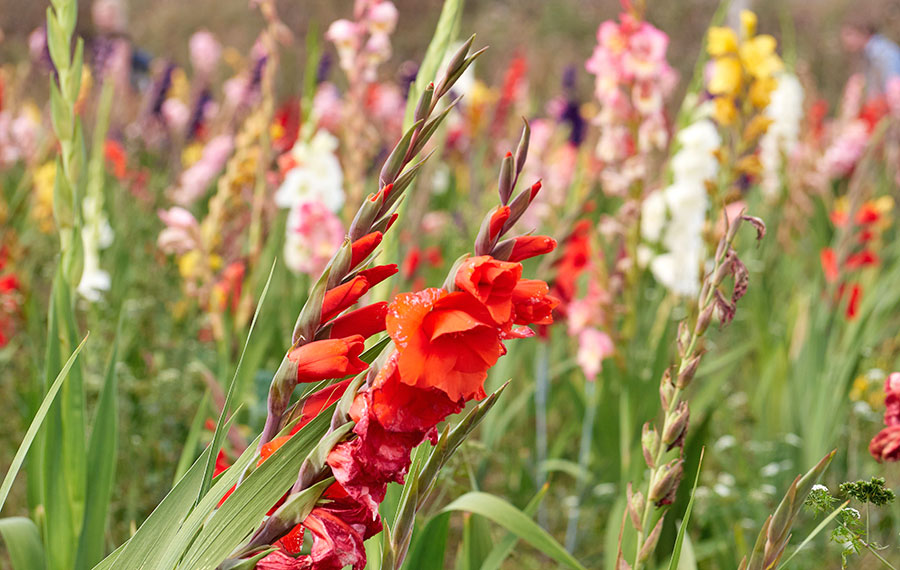
16) Fort Myers was a favorite hideout for the Pirate Jose Gaspar.
Legend has it that the Spanish buccaneer claimed the waters of Pine Island Sound as his home, with Sanibel Island serving as his headquarters. Captiva Island was where he kept his female captives, while he hid his riches on Gasparilla Island. Supposedly his cherished Mexican Princess Joseffa was kept alone on Useppa Island. The story doesn’t stop there, it was even said that to evade captivity by the U.S. Navy, he chose to end his life dramatically by entangling himself in anchor chains and drowning. This supposedly occurred in 1821, ironically the same year Spain traded Florida to the U.S government for a sum of $13 million.
17) J.N. “Ding” Darling National Wildlife Refuge is named after a cartoonist.
Discover the wonders of the J.N. “Ding” Darling National Wildlife Refuge, a pristine haven for nature that spans over half of the breath-taking Sanibel Island. This remarkable refuge bears the name of the prominent Pulitzer Prize-winning cartoonist, Jay Norwood Darling, a true pioneer in environmental conservation. Entering the annals of history not just for his compelling cartoons, but also for his enduring passion for the environment, Darling championed nature like no other. Breaking barriers, he became the very first environmentalist to hold a prestigious position in a presidential cabinet, serving under the administration of Franklin Delano Roosevelt. A visit here isn’t simply an opportunity to connect with nature, it’s a chance to walk in the footsteps of a remarkable figure and truly appreciate our natural world. Venture into the J.N. “Ding” Darling National Wildlife Refuge and embark on an awe-inspiring journey that will fascinate, educate and captivate.
18) Fort Myers was once the “Gladiolus Capital of the World.”
Journey into the heart of the southern expanse of Fort Myers and you will find yourself on Gladiolus Drive, a path as rich in history as it is in beauty. Nestled just off the majestic McGregor Boulevard, Gladiolus Drive earned its name as tribute to the verdant fields of gladiolus farms that once flourished along its route. These flower farms were the brainchild of early settlers hailing from France, Belgium, the Netherlands and Luxembourg. They brought with them an invaluable gift, the bulbs of these spectacular flowers, and found the county’s rich fertile soil and the insistent sunshine of its climate to be the perfect recipe for growth. As a result, these gladiolus farms thrived and gradually expanded, spreading their colorful splendor all over the area, turning the region into a blooming paradise. Sadly, over the course of the last century the flourishing fields slowly waned as the value of the land they occupied surged. The farms were gradually replaced by urban development, reflective of the changing times. Yet, the legacy of the gladioli lives on, immortalized in the name – Gladiolus Drive, a constant reminder of the fragrant history and brilliant colors that once dominated its course.
19) Mound Key was created over 2,000 years ago by the Calusa Indians.
Step back in time and discover the enchanting world of the Calusa Native culture, a civilization that has been carbon-dated all the way back to 1150 B.C. This fascinating journey begins at Mound Key, an intriguing site that history indicates likely began as a humble, low-lying oyster bar on the scenic Estero Bay. The Calusa left behind an extensive structure of mounds and canals that, amazingly, continue to mark the landscape today. These mounds, masterfully constructed by the collection and organization of ‘midden’ – an assortment of shells, fish, animal bone, and precious artifacts such as pottery – serve as a tangible narrative of the Calusa’s culinary habits, everyday life, and artistic expression. The Calusa culture is not only an archaeological treasure but an immersive experience that will keep Fort Myers visitors captivated.
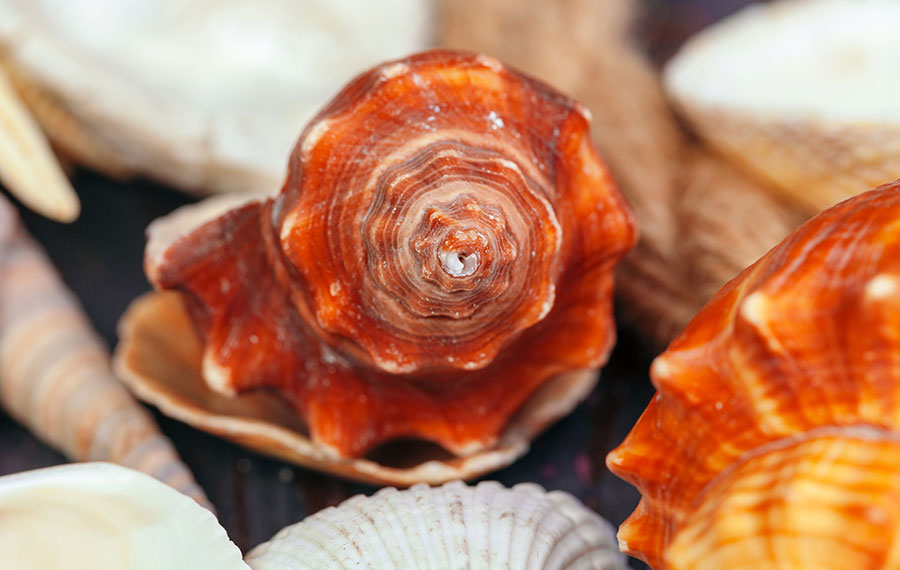
20) Since 1937, the annual Sanibel Shell Show has drawn fans of shelling to Fort Myers.
For decades, the esteemed Sanibel-Captiva Shell Club has been a vibrant hub for conchology and malacology enthusiasts, devoted to propagating knowledge and stimulating interest in these fascinating fields. Since its inception in 1937, the Sanibel Shell Show has become a cherished annual tradition. Hosted each spring, this grandiose expo is not merely an event – it’s a captivating experience that brings together the diverse community of shell aficionados. It showcases an enthralling array of artistic and scientific exhibits that highlight the breathtaking beauty and intriguing diversity of seashells. It’s also a bustling marketplace teeming with meticulously crafted shell-themed products. From beautiful crafts that make a perfect addition to any home decor to unique items that make unforgettable gifts, the Sanibel Shell Show has something for everyone. If you’re visiting Fort Myers in the spring, consider attending and immerse yourself in the wondrous world of shells.
21) The walls and rafters of the Cabbage Key Bar are papered in more than $70,000 in autographed bills.
Across Pine Island Sound from Fort Myers lies a lush, tropical island hosting the majestic Cabbage Key Inn, a hidden gem steeped in history and brimming with character. With an impressive history that spans over six decades, it has catered to the whims and fancies of a variety of clientele. From enthusiasts of tarpon fishing to the vibrant local island community, and not forgetting the droves of tourists eager to sample a slice of island paradise – the Cabbage Key Inn has played host to them all. And with such a varied audience, it’s hardly surprising that the on-site restaurant and bar exhibits such a fascinating spectacle – thousands of autographed dollar bills are attached to the walls, rafters and ceiling – a whopping $70,000 worth! Over the years, countless patrons have contributed, a testament to the unrivaled service and unforgettable experiences they’ve enjoyed. Each year, an average of $10,000 worth of bills simply falls off, to be donated to charity. A blend of stunning scenery, historic charm, and social commitment makes the Historic Cabbage Key Inn more than just a local favorite – it’s a rich, rewarding, and thrilling oasis in Southwest Florida.
22) The historic McCollum Hall was a renowned music venue where African-American jazz icons headlined.
Immerse yourself in the richness of black history and culture at the illustrious McCollum Hall in Downtown Fort Myers. Constructed in 1938 by the visionary Clifford “Buck” McCollum, Sr. and his equally enterprising wife Gertrude, this renowned architectural marvel is more than just a building – it’s a testament to the vibrant heritage of the African-American community. This acclaimed music hall, a beacon of entertainment and commerce in the black community, was the epicenter of jazz and soul in its heyday. From the 1930s to the 1960s, its venerable stage hosted an array of legends who are now counted amongst the greatest musicians of all time. Iconic figures such as Louis Armstrong, B.B King, Ella Fitzgerald, Count Basie, and Duke Ellington all passed through McCollum Hall, leaving an indelible legacy etched in time. Listed in ‘The Negro Motorist Green Book’, McCollum Hall was a safe haven and an electrifying venue for African Americans during times when discrimination was rife. Experience history, relive the jubilant cheers, and walk in the footsteps of legends at McCollum Hall, where past meets present and the vibrant spirit of jazz never fades.
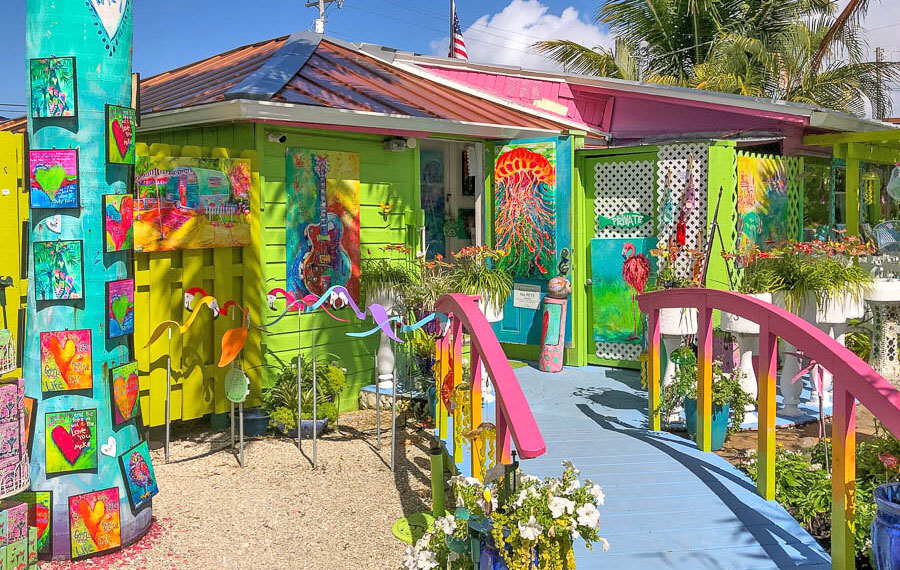
23) Matlacha is an entirely man-made island.
Matlacha, pronounced “MAT-la-shay”, is a folk art community that sits along the road connecting Fort Myers to Pine Island. The roots of this unique location trace back to the year of 1926. The dredged up oyster beds from the depths of Matlacha Pass served as the foundation for this little town, as they established a durable causeway and bridge. This linkage was designed to connect the mainland to the alluring Pine Island, simplifying the lives of many. The early settlers of Matlacha came not in search of gold or glory but out of the simple necessity for survival. They were squatters on the causeway, individuals seeking refuge from the harsh realities of the Great Depression. Despite the challenging circumstances, they persevered, making this marvelous man-made island their home. Matlacha isn’t just an island – it’s a powerful testament to human adaptability and resilience.
24) Cape Coral has more canals than the Italian city of Venice.
South of Fort Myers lies Cape Coral, a place that outshines even the famed Italian city of Venice when it comes to canals! Boasting over 400 miles of intricate waterways, Cape Coral proudly holds the title for the city with the most canals globally. While iconic Venice is celebrated for its old-world waterways, they only encompass a total of 26 miles. Immerse yourself in the tranquility of Cape Coral’s vast network of channels, where you can gently paddle your way via kayak or canoe, taking in the area’s beauty from an entirely unique vantage point. It’s an adventurer’s paradise, with many of these canals offering direct access to the Gulf. Uncover the under-rated charm of Cape Coral as you paddle through the natural landscape of Southwest Florida.
25) Fort Myers was home to three famous titans of industry.
Fort Myers represents a unique piece of history where the light of innovation once shone brightly. Here you can walk through the winter estates of Thomas Edison, the visionary genius who not only perfected the incandescent light bulb but also set the foundation for modern audio recording methods. A stone’s throw away is the grand winter estate of Henry Ford, the unmatched pioneer who fathered the assembly line and founded the globally recognized Ford Motor Company. Imagine being a part of this extraordinary neighborhood where not just two, but three industry titans chose to spend their winters. Nearby is the winter abode of Harvey Firestone, the entrepreneurial luminary who changed the face of road travel with the founding of Firestone Tire Company. Come to Fort Myers and follow in the footprints of these legends, where the echoes of innovation still resonate.
In conclusion, Fort Myers is not just your average tropical city. It’s a rich and vibrant community filled with fascinating stories and interesting people. From the genius minds of Edison and Ford to the creativity of local artists, this city has a unique charm that sets it apart from other popular destinations. So why wait? Discover all that Southwest Florida has to offer by visiting our Fort Myers Vacation Guide for tips on must-visit locations, hidden gems, and insider info on how to fully experience this paradise. Don’t miss out on the opportunity to explore all of the adventures waiting for you in Fort Myers.

